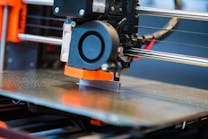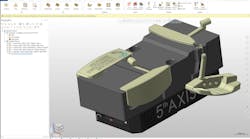Commercial Supersonic Flights No Longer Pie in the Sky (.PDF Download)
One trend seems to prevail across all industries: The faster the technology—whatever it is—the better. Perhaps this is due to the fact that transporting goods and people faster connects directly to the economy.
However, this trend failed to take hold with the Concorde, which offered supersonic flights starting in 1976. Supersonic flight eventually became too expensive and regulated, and the Concorde was grounded in 2003. In 2015, Machine Design published an article on the technology that planned to make supersonic travel possible again. Today, 3D printing is being added to the toolbox to accelerate plans for another attempt at cost-effective supersonic flight.
On that front, Stratasys recently announced a three-year partnership with Boom Technology, a company focused on supersonic flight. Their plan is to use fused deposition modeling (FDM) and Stratasys’ expertise to generate advanced composite tooling and parts for this lofty goal of developing new high-speed aircraft.
Specifically, Boom’s XB-1 Supersonic Demonstrator will need quick tooling and part iterations. The firm is expecting Stratasys’ FDM-based Fortus 450mc and F370 3D printers to produce production-grade thermoplastics for on-demand parts, as well as advanced manufacturing tools that perform even under aviation’s most challenging environments.








